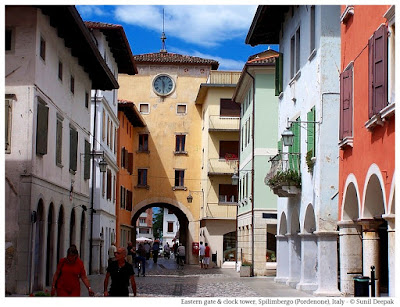Assamese people are a mixture of different races and ethnicities. Over the centuries, people from central and north India, from the Tibetan plateau, from the neighbouring areas of China, Myanmar and Bangladesh, have all contributed to Assamese people and cultures.
Ahoms, who came from the neighbouring Myanmar in the 12th century and ruled Assam for almost eight hundred years, have been a strong influence. Neighbouring Bengal and Odisha, have also been an important influence.
Assam also has different indigenous groups such as Bodo, Mising, Deori, Rabha, Tiwa, Lalung, Khamti, Sonowal, Karbi, Naga, Dimasa and Singpo. It also has tribes from central India who were brought to Assam by the British during the past hundred and fifty years to work in the tea gardens (tea tribes).
Traditional Dance, Music and Theatre
Traditional performing arts of Assam are of two kinds - folk traditions and classical traditions.
Folk traditions are based in rural communities and are orally transmitted between the generations. Only over the past decades, written materials about some folk traditions have been developed.
Classical traditions of Assam are strongly influenced by the Vaishnavaite teachings of Shrimanta Shankar Dev and his disciple Madhabdev in the 16th -17th centuries. Religious centres called Sattra established by the followers of Shankar Dev have developed cultural traditions. These revolve around the texts of Padma Purana and other Hindu scriptures. Classical traditions are governed by codified norms. These include Bhaona theatre, Gayan-Bayan singing traditions and Sattriya dance.
Traditional dances and theatre are accompanied by different musical instruments such as cymbals (Kartal, Khutital, Bhortal), anklets, drums (Joidhol, Deodhol, Nagara, Bordhol, Mridanga, Khol), flutes (Kali, Benu, Bonsi) and cord-instruments (Lautukari, Benu, Aktara).
During 20th century, Bhupen Hazarika, a multi-faceted Assamese artist with interests in folk music, dance and theatre, has been a significant influence in Assam, leading to a renaissance of the traditional art forms.
Classical Music, Dance and Theatre of Assam
Majuli island in Brahmaputra, not far from Jorhat, has the most important Sattra that carry forward the legacy of Shrimanta Shankar Dev.
The image below presents a scene from Ramayana from a Bhaona performance of a group from Majuli, showing princess Sita. All the female roles in Bhaona are usually played by men.
The next image has a group of Cymbal dancers, a kind of Sattriya dance, where the dancers use medium size cymbals during their dance.
Bihu festivals linked with agricultural life are the most popular cultural events of Assam. There are three Bihu festivals – Rongali Bihu, Kongali Bihu and Bhogali Bihu. Bihu folk dance is the most popular dance of Assam.
During this dance, men are responsible for singing, music and dance. The music instruments used in the dance include cymbols, dhols (drums) and pepa. The men wear dhoti and gamocha. The women wear mekhla-chador dresses and one of their characteristic dance movement is that of bending slightly forward with hands on their backs, as shown in the next image.
The first image has boys in the traditional dress of Dimasa (children of the river) tribe who are part of Kachari people. Their mythological stories are about Bangla raja (earthquake god) and a divine bird called Arikhidima.
The next image has dancing young women from the Mising (also called Mishing) tribe. This is one of the bigger tribes of Assam, spread over different districts. This dance is called Lotta Sohman and is accompanied by folk songs called Oi Nitom.
The next image is also about the Karbi tribe and shows the young men in the Nemso Kerung dance. This dance is part of Chomonkan ceremony related to a funeral of elderly persons in the family.
The Next image is about the Popular Theatre of Assam – from the play Sati Bahula directed by Lakhendra Gunnakar Goswami.
Assam shares the tradition of wandering singing mistrals called Bauls with neighbouring Bengal. Bauls are often travellers who carry their songs of devotion to the rural areas. Though close to Hindu ascetics, they also include persons from the Muslim Sufi tradition. The last image of this post has a woman Baul singer during the Ambubashi festival at Kamakhaya temple in Guwahati.
This is just a brief glimpse into the rich traditional dance, theatre and music heritage of Assam in the north-east of India. I lived for about a year and half in Guwahati, the capital of Assam, during 2015-16. This was a great opportunity to know and appreciate some of those traditions.
References: Folk Theatre of Assam, by Gitali Saikia & Sanjib Luchan Tamuli, Jansanyog, Directorate of Information and Public Relations, Assam, India
***


























































